Tom's Hardware Verdict
The AMD RX 5600 XT 6GB is a great performer at 1080p with ultra settings and is plenty capable at 1440p using medium settings. This overclocked Sapphire model beat out the RTX 2060 while costing less and uses less power. It’s a tough card to beat at its $300 price point.
Pros
- +
Great 1080p ‘ultra’ performance, entry-level 1440p
- +
Beats out the RTX 2060 in most titles
- +
Uses less power than RTX 2060 too
Cons
- -
Competing RTX 2060 has been on the market for a year
Why you can trust Tom's Hardware
AMD’s flagship Radeon RX 5700 XT and RX 5700 cards launched last summer and gave the company a formidable, fresh presence in the mid-range to high-end segment of the gaming graphics market and securing both spots on our Best Graphics Card page. The cards performed well compared to their Nvidia counterparts, though doing so with a bit more power consumption. The cards delivered smooth gameplay up to 1440p resolution and was certainly a solid alternative to the RTX 2060 Super at a similar price point.
Months later, AMD filled the budget end with the RX 5500 XT, which also proved to be a viable option for 1080p gaming. But the 4GB variant can be a detriment in some titles, especially if you are using the card in a PCIe 3.0 x16 environment rather than the faster PCIe 4.0 on AMD’s X570 motherboards. But there was still a large price and performance gap between the RX 5500 XT and RX 5700.
Fast forward to today and we have the Radeon RX 5600 XT positioned, according to AMD, to be the ultimate in 1080p performance. The company expects the card to easily run 1920x1080 resolution with ultra to maximum settings for years to come. In our testing, the 5600 XT performs well, easily eclipsing 60 fps at 1080p across most titles (Metro and Ghost Recon were the exceptions in our testing). The RX 5600 XT beats out Nvidia’s GeForce GTX 1660 Ti considerably and wins more than it loses against the GeForce RTX 2060.
Price-wise, AMD is starting the 5600 XT SKUs at $279. This compares favorably to the GTX 1660 Ti (from $269 at Newegg) which it beats out easily and is well below most RTX 2060’s ($320+). We say “most” 2060s because, as at CES 2020, EVGA shared its new RTX 2060 KO which starts out at $299 anticipating the release of this card. If more 2060s start dropping down to or below $300, things get pretty muddy in terms of performance and value in this range.
Below, we’ll dive deep into how the RX 5600 XT performed, what exactly is under its shroud and cooler, and see if AMD is able to reign in the power and up the performance of this mid-range graphics card.
Features
AMD’s RX 5600 XT uses the Navi 10 GPU found in the RX 5700 and RX 5700 XT. The die is manufactured on TSMC’s 7nm finFET process and fits 10.3 billion transistors onto a 251 square mm space. Underneath, the Navi 10 GPU features 36 Compute Units (CUs) for a total of 2,304 stream processors. Each RDNA CU sports four texture units for a total of 144 TMUs along with 64 ROPs.
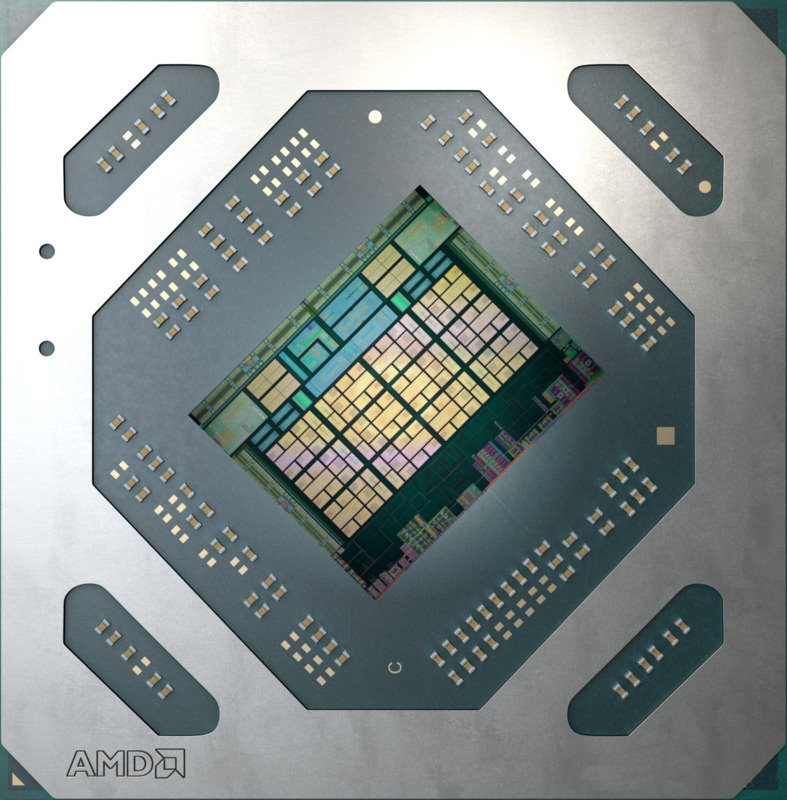
AMD doesn’t list base clocks anymore. However, the reference Gaming clock is listed at 1,375 MHz while the boost clock is listed as up to 1,560 MHz. The Sapphire RX 5600 XT Pulse OC we have for testing in this review lists 1,615 MHz as the Game Clock, with a boost to 1,750 MHz. That’s a pretty huge increases over reference. With most specs being the same (CUs, Shaders, TMUs, ROPs) as the RX 5700, AMD lowered the clocks to fit within power and performance thresholds and to carve out this new SKU.
Get Tom's Hardware's best news and in-depth reviews, straight to your inbox.
All 5600 XT’s will come with 6GB of GDDR6 memory. The 6GB sits on a 192-bit bus with reference speeds of 1,500 MHz (12 Gbps GDDR6 effective). The clock on the Pulse OC (now 14 Gbps GDDR6 effective) yields 336 GBps of bandwidth. Considering the issues that plagued the 4GB 5500 XTs (especially on PCIe 3.0 x16), AMD was asked if the company expects any differences if VRAM runs out and they stated they did not expect any due to the full bandwidth of the slot (PCIe 4.0 x16 for 5600 XT) along with the increased bandwidth in general.
Power consumption on the 5600 XT is listed at 150W (board power). This compares to the 180W RX 5700 and 130W for the RX 5500 XT. On the Nvidia side, the GTX 1660 Ti is listed at 120W and the RTX 2060 160W. The 5600 XT slots right between its peers and competition. A quality 550W+ unit will easily handle this card, along with any overclocking. We’ll dig in a bit deeper on actual power use a later.
AMD states performance per watt is up to 2.1x better than the dated Polaris architecture (RX 480/580/590) with a 42% increase in performance while using 33% less power. Efficiency is now at least in the ballpark with Nvidia.
Display outputs will vary by vendor, but the card we have in hand has three DisplayPort connectors and a single HDMI port. Feeding power to the card will be a single 8-pin connector, which is plenty for a 150W card.
Below is a more detailed specifications table covering the new GPUs:
| Sapphire Radeon RX 5500 XT Pulse 4GB | Sapphire Radeon RX 5600 XT Pulse OC | Radeon RX 5700 | Radeon RX 5700 XT | |
|---|---|---|---|---|
| Architecture (GPU) | RDNA (Navi 14 XTX) | RDNA (Navi 10) | RDNA (Navi 10) | RDNA (Navi 10) |
| ALUs/Stream Processors | 1408 | 2304 | 2304 | 2560 |
| Peak FP32 Compute (Based on Typical Boost) | 5.2 TFLOPS | 7.2 TFLOPS | 7.5 TFLOPS | 9 TFLOPS |
| Tensor Cores | N/A | N/A | N/A | N/A |
| RT Cores | N/A | N/A | N/A | N/A |
| Texture Units | 88 | 144 | 144 | 160 |
| ROPs | 32 | 64 | 64 | 64 |
| Base Clock Rate | 1607 MHz | N/A | 1465 MHz | 1605 MHz |
| Nvidia Boost/AMD Game Rate | 1717 MHz | 1615 MHz | 1625 MHz | 1755 MHz |
| AMD Boost Rate | 1845 MHz | 1750 MHz | 1725 MHz | 1905 MHz |
| Memory Capacity | 4/8GB GDDR6 | 6GB GDDR6 | 8GB GDDR6 | 8GB GDDR6 |
| Memory Bus | 128-bit | 192-bit | 256-bit | 256-bit |
| Memory Bandwidth | 224 GB/s | 336 GB/s | 448 GB/s | 448 GB/s |
| L2 Cache | 2MB | 4MB | 4MB | 4MB |
| TDP | 130W | 150W | 177W (measured) | 218W (measured) |
| Transistor Count | 6.4 billion | 10.3 billion | 10.3 billion | 10.3 billion |
| Die Size | 158 mm² | 251 mm² | 251 mm² | 251 mm² |
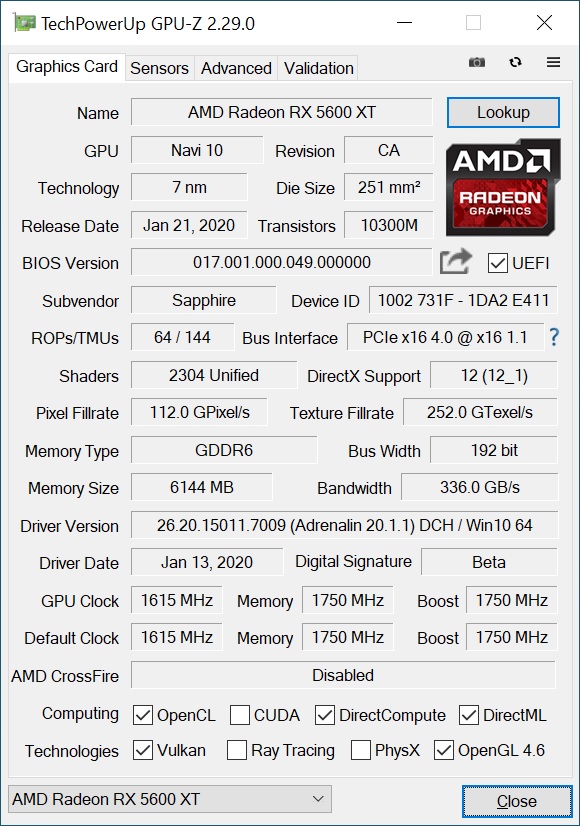
Design
The Sapphire RX 5600 XT Pulse OC is what we have on our test bench for this review. The factory-tweaked SKU is a dual-slot (2.3 slots according to Sapphire) solution measuring in at 10 x 5.3 x 1.8-inches (254 x 135 x 46.5mm), a full-size card. Sapphire’s Dual X cooler and shroud adds an inch or so to the PCB. This specific model isn’t intended for SFF PC’s and should be able to fit in most mid-tower chassis. As always, be sure to verify your case’s specifications before buying.
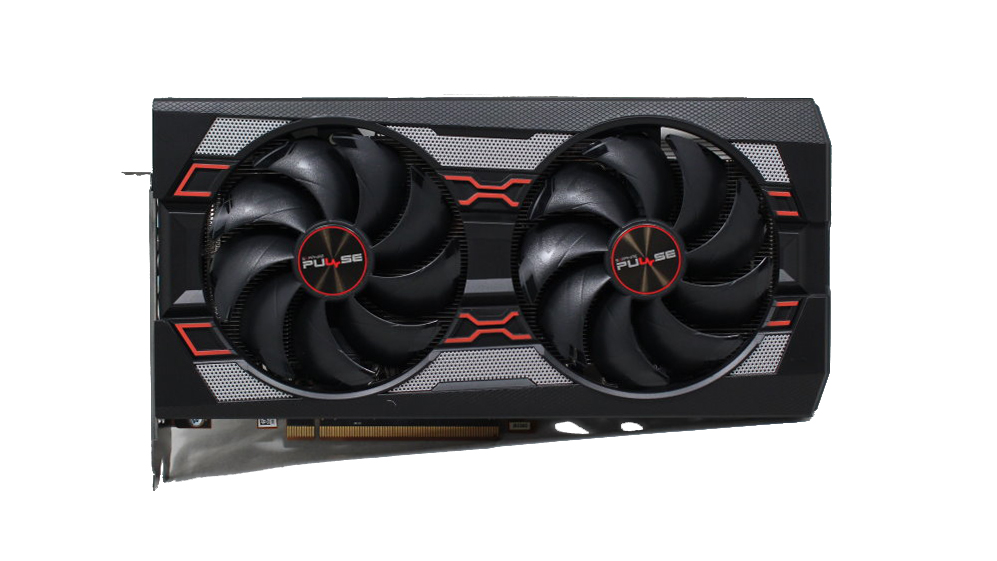
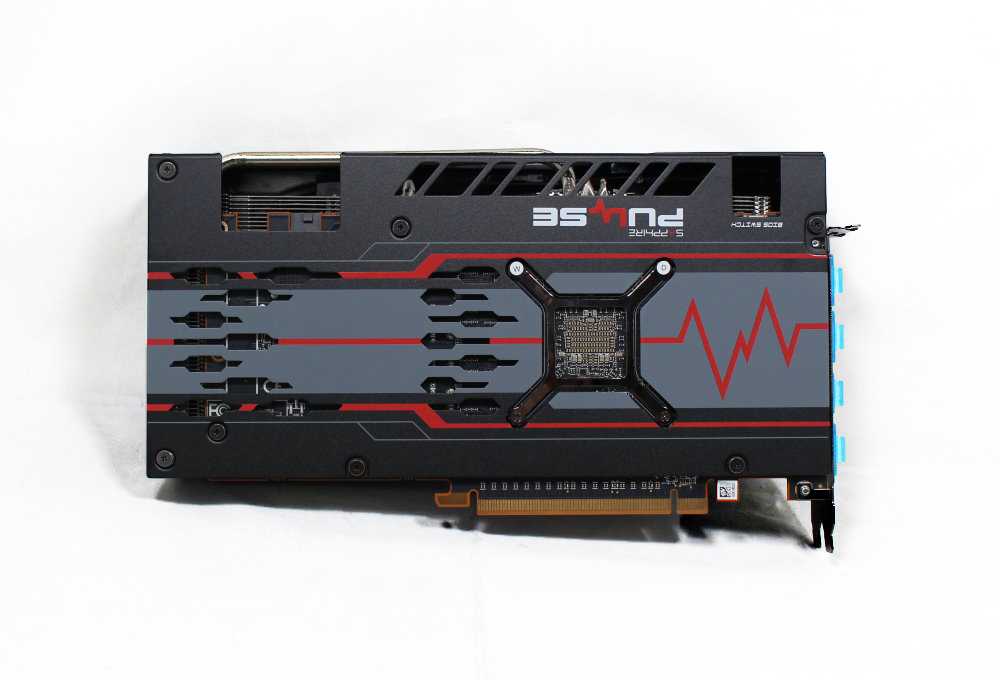
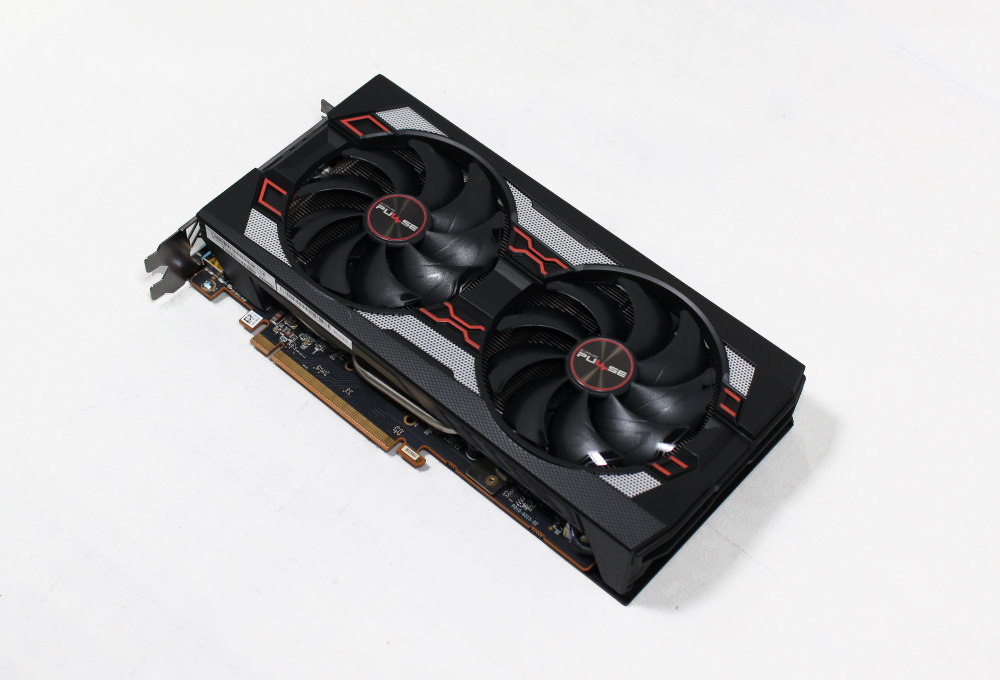
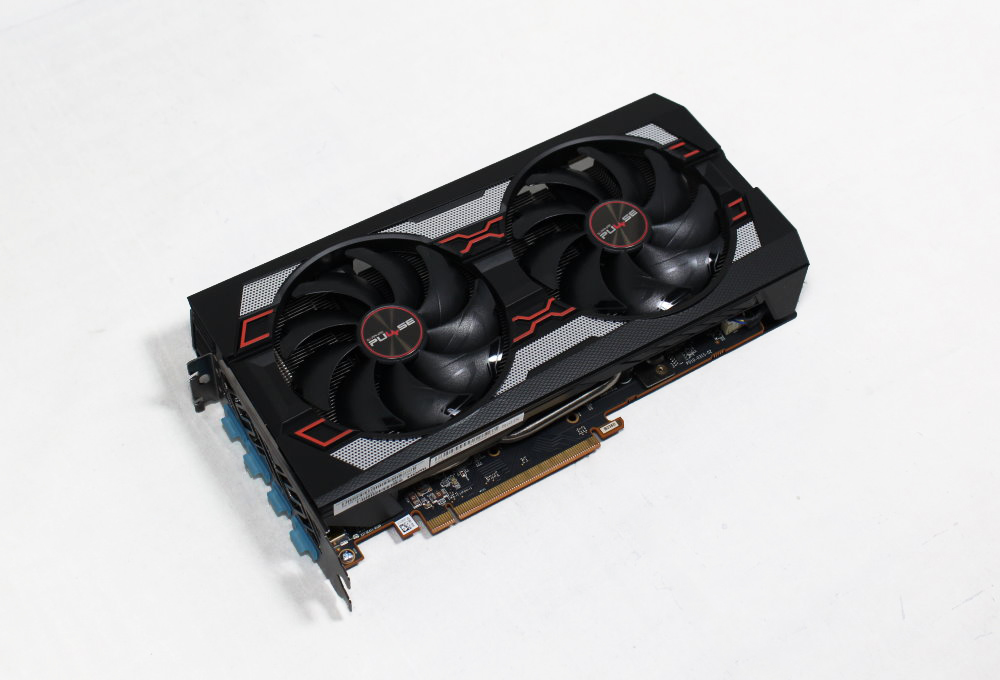
The RX 5600 XT Pulse’s cooling solution sports two large 90mm fans moving air through the heatsink, along with a simple backplate to protect the backside of the PCB. The backplate is more for aesthetics, protection and rigidity. But it does have a couple of thermal pads placed in strategic locations (behind the VRM to name one) to help with passive cooling. The backplate matches the red/black/grey theme for the Pulse, with a large grey band and red highlights running through it.
The fans use dual ball bearings intended for quiet operation and long life. The card also features a zero-fan feature, with the fans switching off under low loads and temperatures, giving users complete silence on the desktop. On top of the card, the Sapphire name is lit up in RGB LEDs -- the only place where we find lighting on this card.
A dual BIOS switch is found on the back of the card. The company’s site doesn’t specify its exact purpose. But it can be used to protect users from bricking a card if they decide to get adventurous and flash the BIOS. In previous versions (Sapphire 5700 XT Pulse) it was a silent mode with lower clocks. When we first received the card, as with the 5500 XT, the clocks did not change. But after we received BIOS updates from AMD the standard mode ran at the higher clock speeds while the silent BIOS runs the card at slower speeds and adjusts the fan curve.
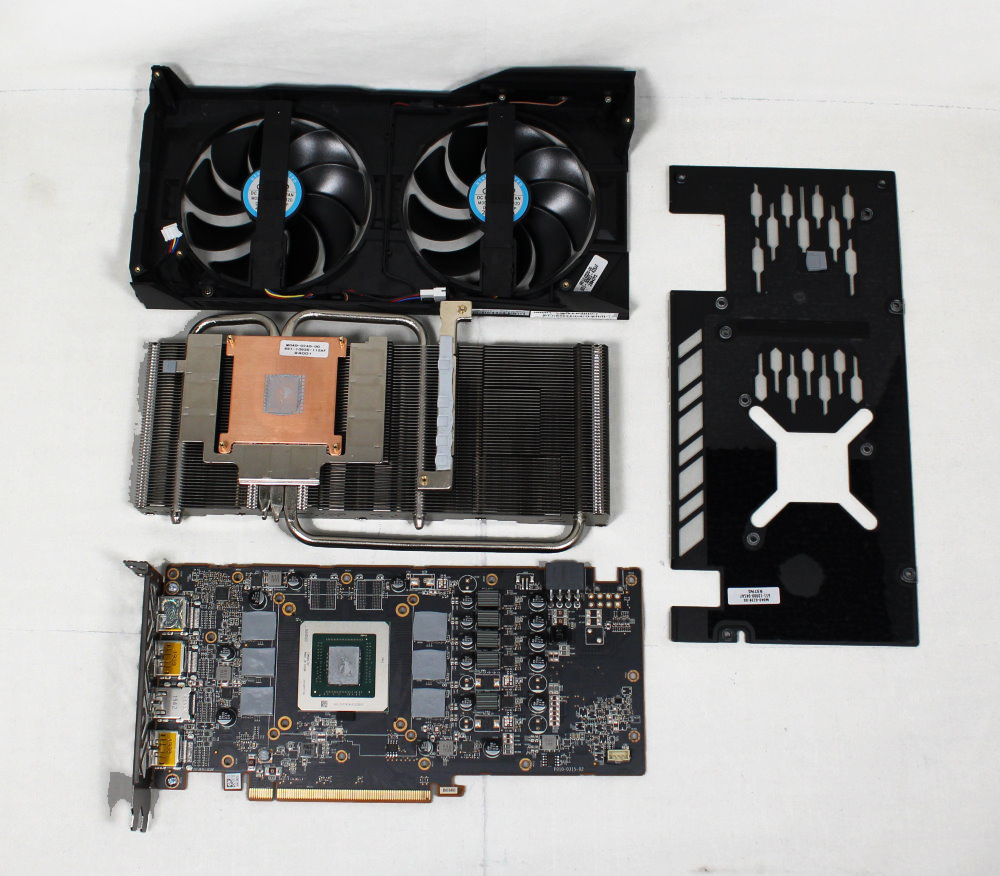
Sapphire’s Dual-X heatsink makes contact with the die through a copper plate which then sends the heat through the heatpipes and into the fin array. The GDDR6 memory is cooled by an aluminum plate direct-connected to the fins. Last, the VRMs are also cooled by the primary heatsink and making contact through thermal pads.

Checking in on the power delivery, we spy a total of five VRM phases that look to be set up in a 4+1 configuration. The MOSFETs consist of Vishay SIC632A 30A integrated power stages while being managed by the ON Semiconductor NCP81022 4+1 digital controller. While this isn’t the high-end International Rectifier controller we’ve commonly seen, it will handle the card at default and overclocked speeds without worry.
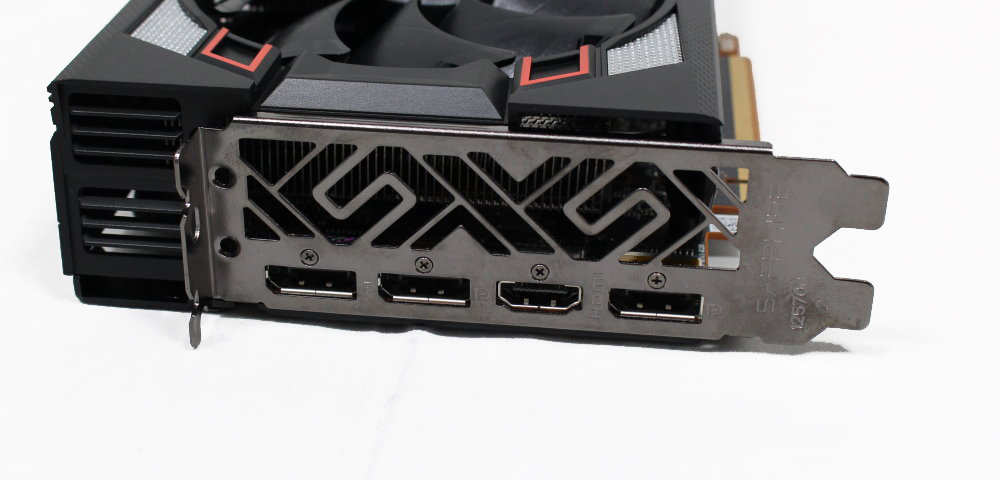
The Sapphire RX 5600 XT’s DisplayPort ports are version 1.4 while HDMI isn’t listed. We expect it to be version 2.0 or greater. The IO plate has the Sapphire “S” cutout for venting and some extra design aesthetics. Seeing as how this is a not a blower-type card, much of the heat will be circulated inside the case with the rest exiting through the IO plate.
How We Tested the RX 5600 XT
Recently, we’ve updated the test system to a new platform. We swapped from an i7-8086K to the Core i9-9900K. The eight-core i9-9900K sits in an MSI Z390 MEG Ace Motherboard along with 2x16GB Corsair DDR4 3200 MHz CL16 RAM (CMK32GX4M2B3200C16). Keeping the CPU cool is a Corsair H150i Pro RGB AIO, along with a 120mm Sharkoon fan for general airflow across the test system. Storing our OS and gaming suite is a single 2TB Kingston KC2000 NVMe PCIe 3.0 x4 drive.
The motherboard was updated to the latest (at this time) BIOS, version 7B12v16, from August 2019. Optimized defaults were used to set up the system. We then enabled the memory’s XMP profile to get the memory running at the rated 3200 MHz CL16 specification. No other changes or performance enhancements were enabled. The latest version of Windows 10 (1909) is used and is fully updated as of December 2019.
As time goes on we will build our database of results back up based on this test system. For now, we will include GPUs that compete with and are close in performance to the card that is being reviewed. For AMD cards, we compared this to the Gigabyte RX 5500 XT Gaming OC 8G, a reference Radeon RX 5700 as well as the XFX RX 590 Fat Boy. On the Nvidia side, we used an EVGA GTX 1660 Super SC Ultra, EVGA GTX 1660 Ti XC, and an RTX 2060 Founders Edition.
Our list of test games is currently Tom Clancy’s The Division 2, Ghost Recon: Breakpoint, Borderlands 3, Gears of War 5, Strange Brigade, Shadow of The Tomb Raider, Far Cry 5, Metro: Exodus, Final Fantasy XIV: Shadowbringers, Forza Horizon 4 and Battlefield V. These titles represent a broad spectrum of genres and APIs, which gives us a good idea of the relative performance difference between the cards. We’re using driver build 441.20 for the Nvidia cards and Adrenalin 2020 Edition 19.12.2 for AMD cards (the 5600 XT uses 20.1.2 beta drivers).
We capture our frames per second (fps) and frame time information by running OCAT during our benchmarks. In order to capture clock and fan speed, temperature, and power, GPUz's logging capabilities are used. Soon we’ll resume using the Powenetics-based system used in previous reviews.
MORE: Best Graphics Cards
MORE: GPU Benchmarks
MORE: All Graphics Content
Current page: Features and Specifications
Next Page Performance Results: 1920 x 1080 (Ultra)
Joe Shields is a staff writer at Tom’s Hardware. He reviews motherboards and PC components.
-
logainofhades The Final Fantasy IV 1440p results are in the 1080p page, and the 1080p results are in the 1440p page.Reply -
King_V This was actually better than I expected for the 5600XT, and, as the article stated, was exactly what AMD needed to do. Equaling or outdoing the 2060 while consuming less power was, I think, something Nvidia was not expecting. Nor was I, for that matter.Reply
It's definitely still the target card for my son's upcoming GPU upgrade. More definitively than I would've said prior to testing. -
Zizo007 This shows how efficient Navi is and with a bigger die like Big Navi, performance should surpass the 2080 Ti. In the other hand 7nm Ampere is around the corner so AMD won't have the victory for long if they release Big Navi now.Reply -
g-unit1111 Seems like a pretty awesome card when the only con is "Competing RTX 2060 has been on the market for a year". I may have to pick one of these up!Reply -
cryoburner One thing that's probably worth noting is that all 5600 XTs currently available for sale will perform at least 10% slower out of the box than the results shown here, as they all include the old BIOS, since AMD didn't make that last-minute change until after they shipped to retailers.Reply
So, unless one performs a BIOS update on the card, they are going to be missing out on a lot of performance, at least until new stock starts shipping with the new BIOS. And I suspect most people are not going to be flashing the BIOS of their card, as that's not normally a thing you do with a new graphics card, and is not without risk. Is the card even going to be covered if someone bricks it during the flashing process? Also, as I understand it, the new BIOS only applies to OC models, so models shipping at stock clocks may not receive a BIOS update to the higher clocks, effectively making two versions of the 5600 XT with a 10%+ performance difference between them. It won't be clear which is which just from the product names, and even the OC models may potentially come with the original, substantially slower BIOS, as that's what they all currently use. That certainly makes for a messy launch, and should have probably been mentioned in the review.
This review really should have included performance data for the original BIOS (that comes on the card), which is something the other 5600 XT reviews I've seen so far have done. It seems a bit bizarre that it wouldn't be included in the review, as this is not the kind of performance people will be getting from one of these cards right now, at least without flashing the card's BIOS. -
King_V Replycryoburner said:One thing that's probably worth noting is that all 5600 XTs currently available for sale will perform at least 10% slower out of the box than the results shown here, as they all include the old BIOS, since AMD didn't make that last-minute change until after they shipped to retailers.
So, unless one performs a BIOS update on the card, they are going to be missing out on a lot of performance, at least until new stock starts shipping with the new BIOS. And I suspect most people are not going to be flashing the BIOS of their card, as that's not normally a thing you do with a new graphics card, and is not without risk. Is the card even going to be covered if someone bricks it during the flashing process? Also, as I understand it, the new BIOS only applies to OC models, so models shipping at stock clocks may not receive a BIOS update to the higher clocks, effectively making two versions of the 5600 XT with a 10%+ performance difference between them. It won't be clear which is which just from the product names, and even the OC models may potentially come with the original, substantially slower BIOS, as that's what they all currently use. That certainly makes for a messy launch, and should have probably been mentioned in the review.
This review really should have included performance data for the original BIOS (that comes on the card), which is something the other 5600 XT reviews I've seen so far have done. It seems a bit bizarre that it wouldn't be included in the review, as this is not the kind of performance people will be getting from one of these cards right now, at least without flashing the card's BIOS.
An excellent point - and what I'm seeing from the Anandtech review (not done reading) makes me wonder if the ideal for this card is the original reference clocks, but with the memory boosted to 14GB.
EDIT: I do admit I dislike the messiness. It seems somewhat akin to the RX 560 - 896 vs RX 560 - 1024 issue. Maybe THIS should've been the 5600 vs 5600XT, and if the OEM version has lesser performance than even the 5600 (non-XT), maybe call that 5600 LT?
EDIT 2: a brief look at NewEgg seems to indicate a lot of OC variants having slightly later release dates (Jan 23, Jan 27) with slightly higher prices (289 to 309, vs the 279 for the "base" versions). At least, that's what it seems like. -
shrapnel_indie I see this article is the victim of cut and paste.... the how we tested header refers to the wrong card. How many other mistakes creapt in? Hopefully no more than in the headers used for formatting. Beyond that, THIS is a card to watch, or grab after a BIOS update, for right now.Reply -
TCA_ChinChin Reply
I don't think it's like the Rx 560 issue. That was a fiasco with intentionally misleading advertising similar to GT 1030 crap that Nvidia did. This is just free performance if you do an update. It's a messy and unprofessional launch, but nowhere near the intentionally misleading products of rx560 and gt1030 variants.King_V said:An excellent point - and what I'm seeing from the Anandtech review (not done reading) makes me wonder if the ideal for this card is the original reference clocks, but with the memory boosted to 14GB.
EDIT: I do admit I dislike the messiness. It seems somewhat akin to the RX 560 - 896 vs RX 560 - 1024 issue. Maybe THIS should've been the 5600 vs 5600XT, and if the OEM version has lesser performance than even the 5600 (non-XT), maybe call that 5600 LT?
EDIT 2: a brief look at NewEgg seems to indicate a lot of OC variants having slightly later release dates (Jan 23, Jan 27) with slightly higher prices (289 to 309, vs the 279 for the "base" versions). At least, that's what it seems like. -
TJ Hooker Reply
The thing is we don't know if/when all models will get this update:TCA_ChinChin said:I don't think it's like the Rx 560 issue. That was a fiasco with intentionally misleading advertising similar to GT 1030 crap that Nvidia did. This is just free performance if you do an update. It's a messy and unprofessional launch, but nowhere near the intentionally misleading products of rx560 and gt1030 variants.
https://www.anandtech.com/show/15422/the-amd-radeon-rx-5600-xt-review/2AMD said:The updated VBIOS has been made available to our board partners for inclusion in select OC SKUs at launch.
The Pulse (which has the improved VBIOS) is what was sampled to all the tech sites for review, so that's what people are going to see in reviews/benchmarks, at least for now. But if they go out and buy an RX 5600 XT they could be getting a card that's slower than what they saw in those reviews by a not-insignificant amount. Seems like a pretty good chance people could be misled, whether intentionally or not. -
TCA_ChinChin Reply
I guess we'll see. Like I said though, as of now, the situation is unprofessional, not misleading. It remains to be seem whether or not every model of 5600xt can receive this update. If every model can be updated, then there is no misleading at all, simply an unprofessional launch. If not, then we can say it is misleading and then debate if it was intentional or not.TJ Hooker said:The thing is we don't know if/when all models will get this update:
https://www.anandtech.com/show/15422/the-amd-radeon-rx-5600-xt-review/2
The Pulse (which has the improved VBIOS) is what was sampled to all the tech sites for review, so that's what people are going to see in reviews/benchmarks, at least for now. But if they go out and buy an RX 5600 XT they could be getting a card that's slower than what they saw in those reviews by a not-insignificant amount. Seems like a pretty good chance people could be misled, whether intentionally or not.